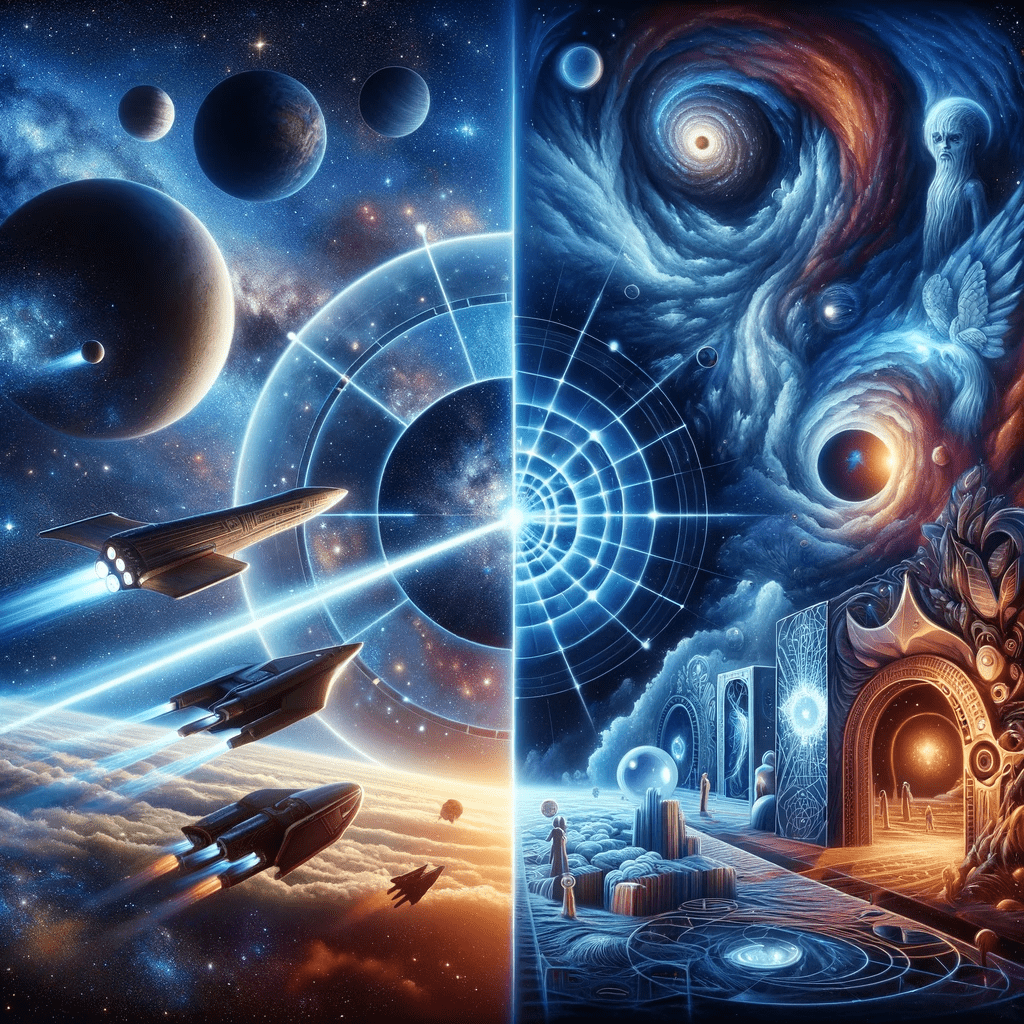Interdimensional Travel vs Interstellar Travel

Both interdimensional travel and interstellar travel are concepts that currently reside in the realm of theoretical physics and science fiction. Given humanity’s intrinsic curiosity about the universe and our place in it, the possibility of exploring beyond our planet – or even beyond our dimension – has always been tantalizing.
1. Interstellar Travel:
The vast distances between stars make interstellar travel an immensely challenging prospect.
Current Progress and Challenges:
- Voyager Probes: These spacecraft, launched in the 1970s, are humanity’s farthest-reaching emissaries, now traversing the interstellar medium. But they were not designed for star travel and will take thousands of years to approach even the closest star systems.
- Proxima Centauri: Our closest stellar neighbor, this red dwarf star, is accompanied by an exoplanet, Proxima Centauri b, lying within its habitable zone. But at over 4 light-years away, even reaching 10% of the speed of light would require a travel time of 40 years.
- Breakthrough Starshot: This initiative envisions using powerful ground-based lasers to propel wafer-thin spacecraft on light sails. If successful, these crafts could reach speeds of up to 20% the speed of light.
- The Alcubierre “warp” drive: Envisaged by physicist Miguel Alcubierre, this concept would allow a spacecraft to contract space in front of it and expand space behind it. This would create a “bubble” of flat space where the ship would rest, effectively moving the space around the spacecraft faster than light can travel. However, the requirements, like negative energy densities, are still largely theoretical.
2. Interdimensional Travel:
Interdimensional travel is even more speculative than interstellar but ultimately could be more realistic than interstellar travel.
Current Progress and Challenges:
- String Theory: This theory, an attempt to reconcile general relativity and quantum mechanics, posits that the universe is made up of tiny, vibrating strings. In some versions of string theory, there are multiple dimensions beyond the familiar four (three of space and one of time).
- Compactified Dimensions: Many of these theorized dimensions are “compactified” or rolled up into such small scales that they’re almost impossible to detect with our current technology.
- Evidence and Technology: While theories like string theory suggest the existence of more than the familiar four dimensions, direct experimental evidence for such dimensions or for alternate universes is yet to be confirmed. Efforts to detect these additional dimensions, especially at particle colliders like the Large Hadron Collider, are ongoing. These explorations are grounded in attempts to reconcile inconsistencies in current theoretical physics models. The idea of building technology or methodologies to navigate or access these dimensions, if they exist as imagined, remains in the realm of physics.
Interstellar Travel is grounded in physics we understand, albeit extended to scales and energy levels we’ve yet to achieve. The challenges, from vast distances to the hazards of deep space like radiation, microgravity, and interstellar dust, are considerable. Yet, they are conceptually tangible.
Interdimensional Travel offers the allure of potentially bypassing the vastness of space. But it’s based on theories that, while intriguing, lack current understanding. The very notion of “traveling” between dimensions remains abstract.
Both forms of travel remain, for now, within the realm of theory and imagination. While interstellar travel appears closer to our grasp, mainly because it operates within known physical laws, the mysteries of the universe are vast. As we look deeper into the quantum realm and our understanding of the cosmos matures, the lines between the possible and the impossible may shift in unexpected ways. The possibility of Interdimensional Travel might surprise us.

